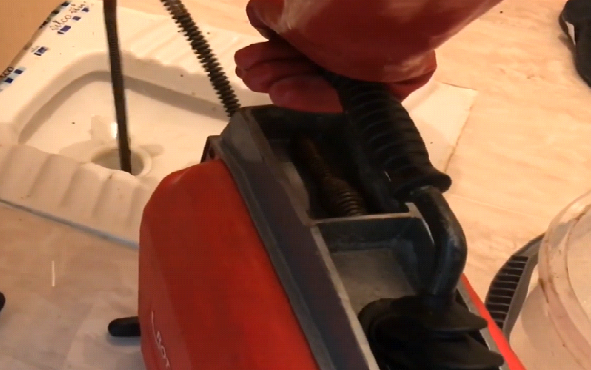Ensuring that workers are actively involved in safety and health decisions isn’t just good practice — it’s the law in many places. Yet, for many companies, understanding exactly how to follow these rules can feel confusing and overwhelming. Let’s break it down step by step, using plain language, relatable stories, and practical actions you can apply in your own workplace.
Why Worker Involvement Matters
Imagine this: you’re running a busy construction site. Everyone’s working hard, deadlines are tight, and suddenly, an accident happens. Investigations later reveal that a junior worker had spotted the hazard days before but felt too shy to speak up. Situations like this show why involving everyone — from new hires to senior staff — in safety discussions is critical.
When workers feel heard, they are more likely to share their insights. This means hazards are found earlier, risks are reduced, and people go home safely at the end of each day.
How Does This Tie in with the NEBOSH Course?
Before we dive deeper, it’s worth mentioning that many professionals take a NEBOSH Course to learn about hazard spotting and worker engagement in detail. This globally recognized qualification helps you understand legal requirements and how to apply them practically at work. So, if you’re serious about compliance, this training is worth considering.
Understanding the Legal Basics
Different countries have slightly different laws, but the principles are mostly the same:
Workers must be consulted about health and safety matters.
They should have a say in risk assessments.
Employers must make sure people know how to report hazards and near misses.
Clear records of consultations should be kept.
Compliance means more than ticking boxes — it’s about creating a culture where people feel confident to speak up.
Step 1: Build a Culture of Trust
Regulations alone don’t make people talk. To really get workers involved, build trust.
Listen actively: Don’t dismiss ideas, even if they seem minor.
Act on feedback: If someone reports a slippery floor and you fix it fast, it proves you take concerns seriously.
Praise participation: Reward teams who spot hazards and share solutions.
One factory manager once told me, “We stopped seeing safety as a ‘management job’ the day we gave workers the power to stop a machine if they felt unsafe. It changed everything.”
Step 2: Train Everyone — Not Just Managers
Worker involvement starts with knowledge. Everyone should understand the risks at work, how to spot them, and how to raise issues.
Tips:
Offer short refresher talks during team meetings.
Use real-life scenarios — people remember stories better than manuals.
Bring in external experts if needed.
Again, enrolling supervisors in a NEBOSH Course or similar training can help them lead by example.
Step 3: Include Workers in Risk Assessments
One of the clearest legal duties is involving staff when identifying hazards.
Here’s how:
Walk the site together: Don’t just do inspections alone. Take a few workers from different shifts and departments.
Ask for worst-case scenarios: Workers often know risks that managers overlook.
Update regularly: Conditions change, so repeat assessments and get fresh input.
Step 4: Set Up Simple Reporting Methods
Workers must have easy ways to report hazards, near misses, or unsafe behavior without fear.
Options include:
Suggestion boxes for anonymous tips.
Hotline numbers or an online form.
Regular team meetings where reporting is encouraged.
One warehouse I visited added a QR code on noticeboards — staff scanned it with their phones to instantly report issues. Reports doubled overnight!
Step 5: Hold Regular Safety Meetings
Meetings are vital for discussing existing and new risks.
How to do it well:
Keep it short and to the point — people hate long, boring meetings.
Rotate who leads the discussion.
Use real examples — share lessons from accidents or near misses.
This is also a great time to revisit policies and discuss if everyone feels heard.
Step 6: Keep Records
Regulators often ask for proof that you’re involving your workforce.
Maintain logs of:
Who attended safety meetings.
What was discussed.
What actions were taken afterward.
Good records show you’re serious and help protect you legally if something goes wrong.
Step 7: Review and Improve
Worker involvement isn’t a one-time task. Review how it’s working:
Do people participate, or do they stay silent?
Are hazards spotted early?
Do incidents reduce over time?
If not, tweak your approach. Maybe you need more training, or maybe supervisors need coaching on listening better.
Common Mistakes to Avoid
Over the years, I’ve seen a few pitfalls:
Fake consultations: Asking for input but ignoring it kills trust.
Overcomplicating processes: Keep forms and meetings simple.
Blaming people for mistakes: This discourages honest reporting.
Instead, focus on learning and improving.
Real-Life Story: A Lesson in Listening
At one small manufacturing plant, a new machine kept jamming. The operator reported it several times but was brushed off. A few weeks later, the jam caused a dangerous spark that nearly started a fire.
After this near-disaster, the company changed its tune. They launched weekly toolbox talks, made hazard reporting anonymous, and gave rewards for good suggestions. Accidents dropped by 40% in a year.
This proves that when people feel heard, workplaces become safer.
How This Connects to Hazard Management
Worker involvement is directly linked to hazard control. The people doing the job see dangers before managers do. Involving them helps you tackle workplace hazards at the root — whether it’s a wet floor, faulty wiring, or unsafe lifting practices.
So, think of worker involvement as a crucial tool in your hazard management plan.
Takeaway: Your Step-by-Step Checklist
Here’s a quick summary you can use to check your compliance:
✅ Build trust and open communication.
✅ Train everyone to understand risks.
✅ Involve staff in inspections and assessments.
✅ Create easy ways to report hazards.
✅ Hold regular, effective meetings.
✅ Keep accurate records.
✅ Review, learn, and improve constantly.
Ready to Improve Safety?
If you want to deepen your knowledge, enrolling in a NEBOSH Course is a smart move. It’s trusted by employers worldwide and gives you practical tools to manage risks and comply with safety laws confidently.
And if you’re in Pakistan and looking for practical local training, consider a Safety Officer Course in Multan — it’s a great stepping stone for anyone starting in workplace safety.
Final Thoughts
Complying with worker involvement regulations isn’t about paperwork — it’s about people. Listen to them, trust them, and act on what they say. When you do, you don’t just comply with the law — you create a workplace where everyone goes home safely.








